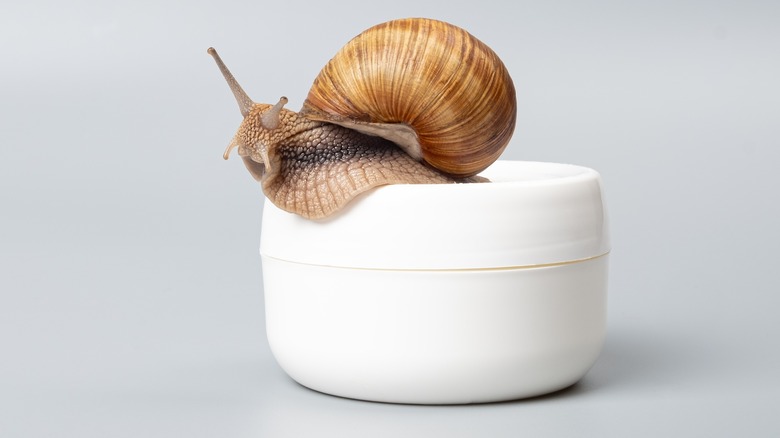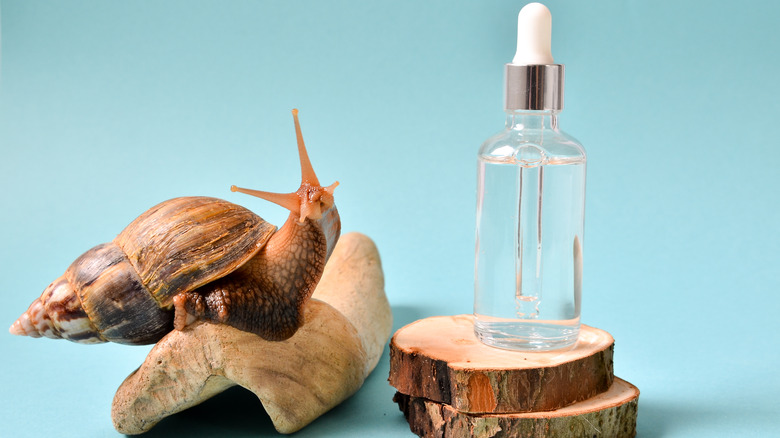Can You Use Snail Mucin With Retinol Or Skincare Acids?
If you stick to a regular skincare routine, you probably already know what you like and don't want to introduce anything else that might negatively affect how your current products work for you. Retinol, a popular skincare ingredient, is particularly temperamental when it comes to mixing with other ingredients, including alpha hydroxy acids (AHAs).
It's understandable that skincare ingredients that receive a lot of buzz on social media can sound like tempting additions to your own routine, and one particularly trendy product is snail mucin. While WebMD explains that mucin is actually the slime from snails, it also happens to be an ingredient that has become more and more common in skincare products around the world because of its popularity in Korean beauty.
It's always tempting to try the latest and greatest for you skin, but is it safe for you to combine snail mucin with retinol and/or acids that might already be in your routine? We've broken down what you need to know about these combinations of ingredients before trying them for yourself.
There isn't much research on snail mucin's interactions
First, we have a little bit of bad news. Most sources online have noted that very little research has been done on snail mucin, its potential side effects, and its interactions. As dermatologist Sheel Desai-Solomon, MD, told Byrdie, "There aren't any well-documented side effects of snail mucin." Unfortunately, this means that you'll need to approach your use of the ingredient with some degree of caution, especially if you have known allergies, sensitive skin, or dermatological conditions that could be worsened by its use. As with any new ingredient or product, doing a patch test before you apply snail mucin more widely should be your first step.
With that in mind, though, it seems that snail mucin is not likely to be a cause for concern for most people, or the side effects of it would have been documented in South Korea or elsewhere already. Similarly, dermatologist Mamina Turegano, MD, assured Cosmopolitan, "Personally, I think snail mucin pairs well with most skincare."
Some products contain both snail mucin and retinol or acids
While the dermatologists' explanations to other outlets don't answer the retinol or skincare acids questions directly, we have some better news to share. The short answer here is that snail mucin can be mixed with retinol and skincare acids, as many skincare products do contain some combination of these ingredients already. Anything that has been tested and approved by a regulatory agency should be perfectly safe for you to use on your skin, although you might want to be more careful when combining your own products as you work to find the right mix for yourself.
K-beauty brand Cosrx, which is particularly known for its products containing snail mucin, also sells separate products containing retinol. Meanwhile, Nudie Glow, a K-beauty store based in Australia, has clarified in a set of frequently asked questions that snail mucin can be used in combination with alpha hydroxy acids, beta hydroxy acids, and retinol.
However, with all that said, if you have any specific concerns about your skincare routine and how it could be affected by the inclusion of snail mucin, it's important to bring those up to your dermatologist.


